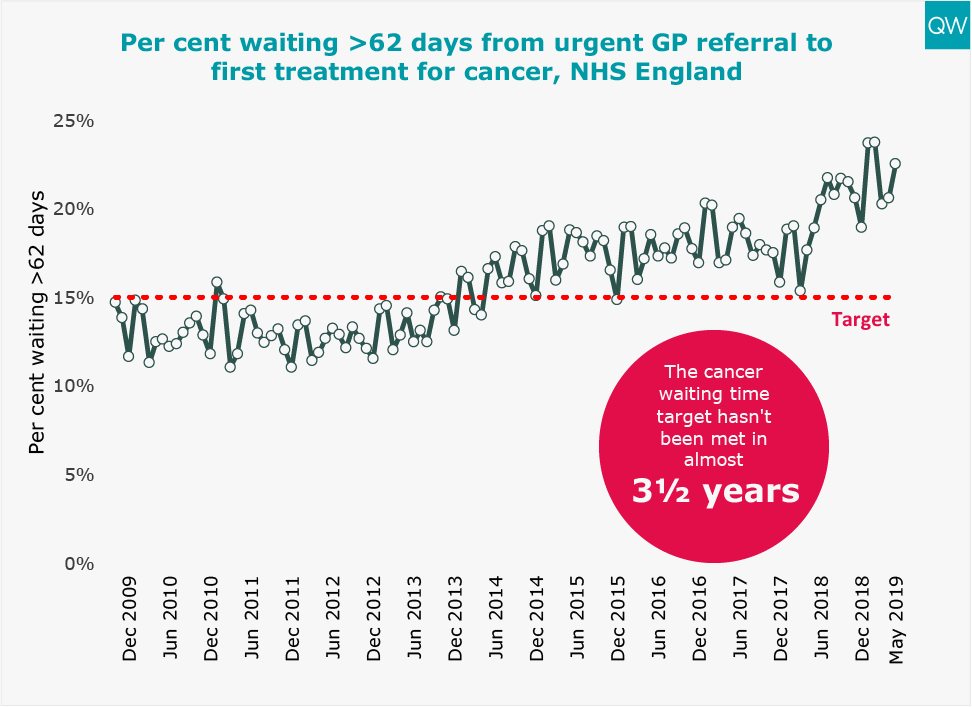Today, NHS England published its Combined Performance Summary, which provides data on key performance measures for May and June of this year. Here we show some of these statistics and how they compare with previous years.
In March, the Clinically-Led Review of NHS Access Standards Interim Report was released, which proposed some significant changes to many of the targets reported on here.
For urgent and emergency care, field testing of the proposed new access standards began in 14 hospital trusts on 22nd May. The first stage of testing has focused on measuring the “mean time in A&E”, when compared to the existing four hour A&E standard. The field test sites did not submit four hour performance data for May or June of this year, so the national time series omits these sites’ A&E performance. The time series data presented here excludes the field testing sites and so is comparable across months and years.
For interactive charts showing the quality of health and social care over time, please refer to our 200+ indicators.
A&E
- In June 2019, 13.6% of people attending A&E spent more than 4 hours from arrival to admission, transfer or discharge – the worst performance for any June on record. Performance was worse than in December 2018, and there was a 4.5 percentage point increase on June 2018.
- The decline in performance comes alongside a 2.1% increase in the average number of major A&E department (Type 1) attendances per day in June 2019 compared to June last year. Nationally this equates to an increase of 914 attendances per day on average. In June 2019, there was an average of 44,472 Type 1 A&E attendances per day – the highest since records began.
- Emergency admissions via A&E have been increasing year-on-year, reaching over 398,000 in June 2019. The average number of emergency admissions via A&E per day reached 13,289, which is 4.1% higher than the same month last year. This increase may be related to the rise in same-day emergency care, where patients are treated and discharged on the same day as admission.
- 57,820 patients spent more than 4 hours waiting on a trolley from decision to admit to admission in June 2019. This is over 71% higher than June of last year.
- In June 2019, 471 patients had a trolley wait of over 12 hours, which is 4.8 times higher than the same month last year.
- Trolley waits in April, May and June of this year were higher than they were for the corresponding months of the last seven years.
- Only three out of 119 major A&E departments that submitted performance data met the four-hour A&E waiting time target in June 2019.
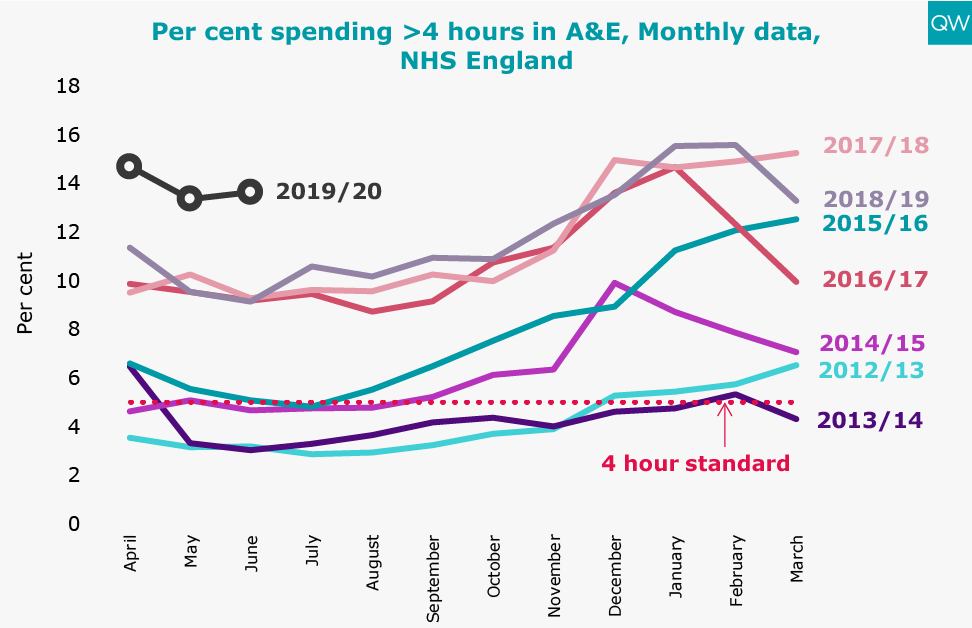
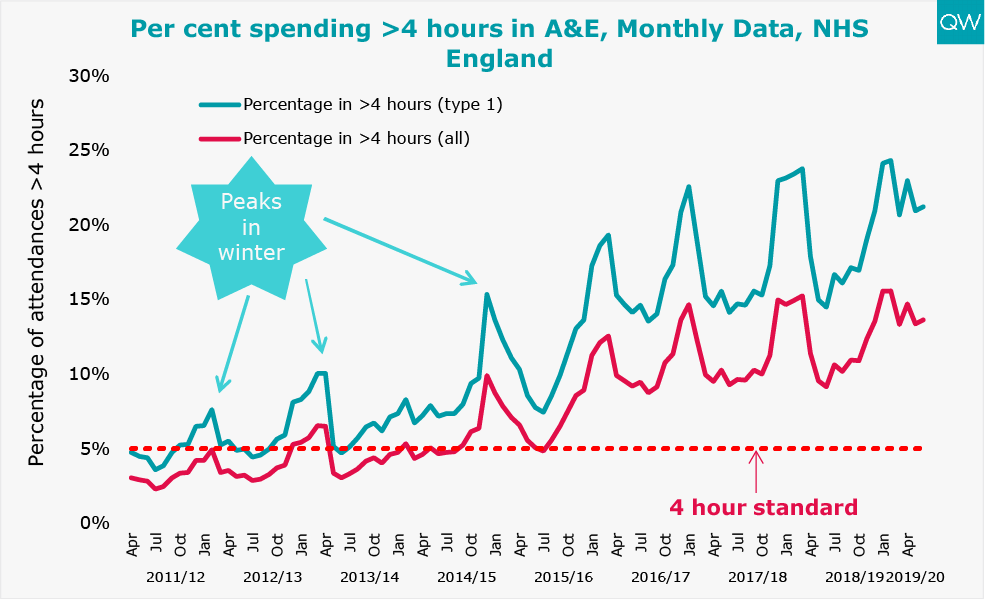
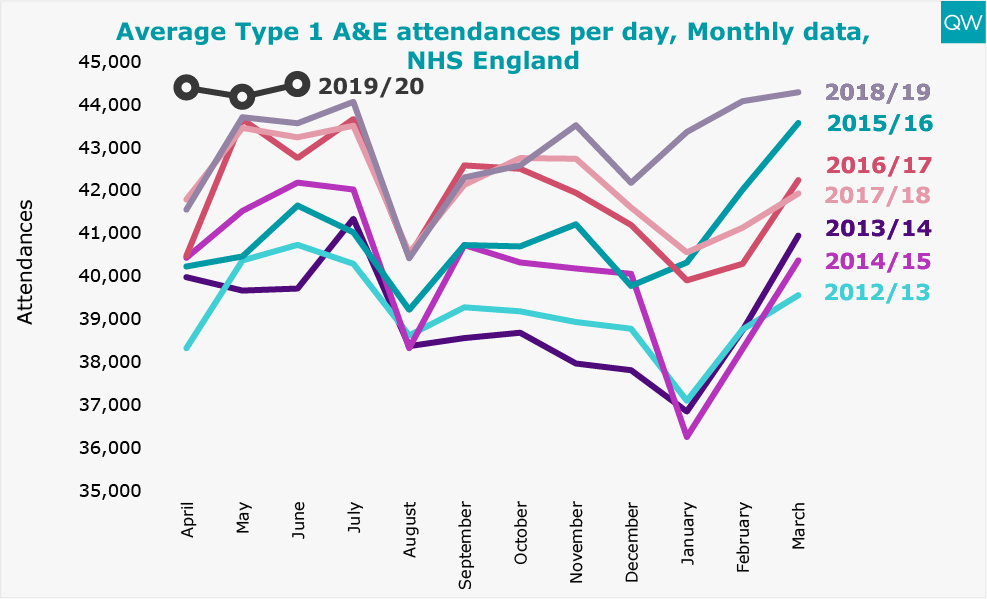
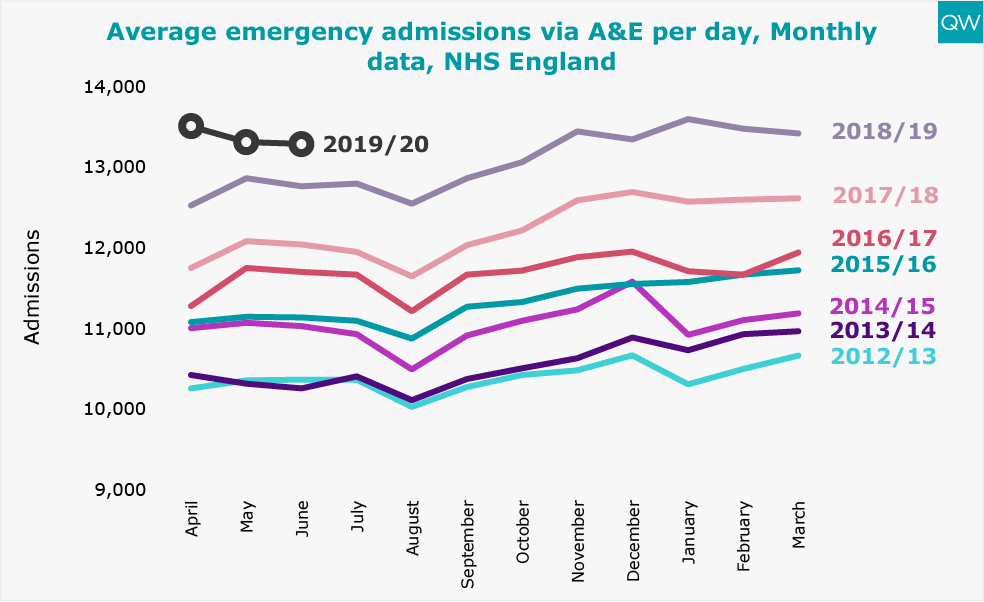
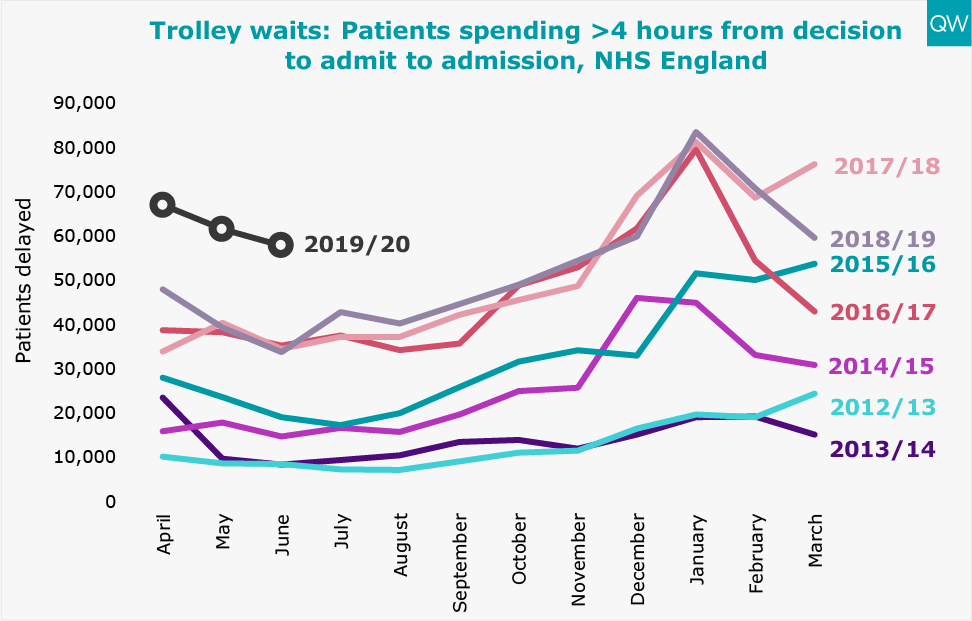
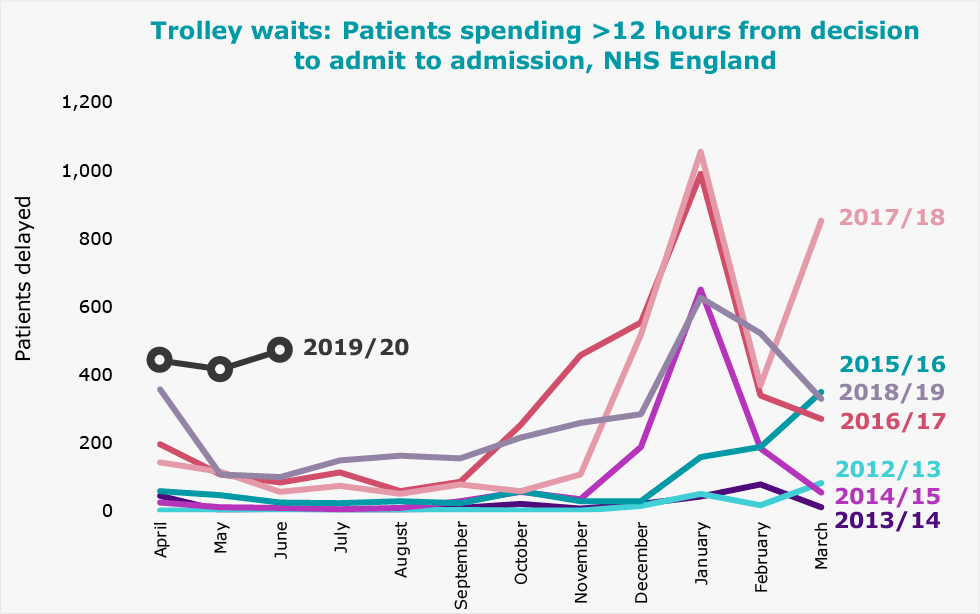
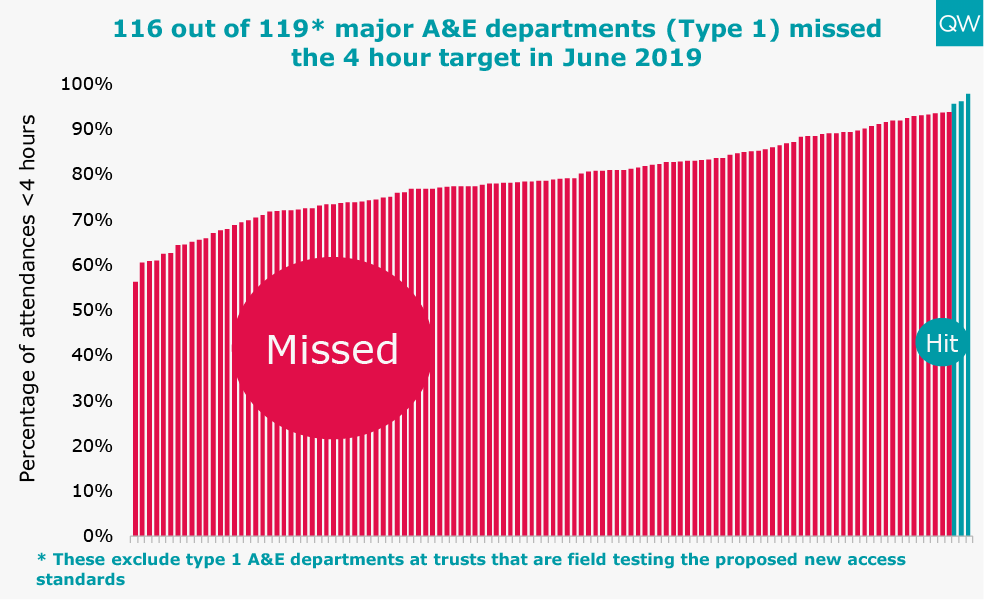
Treatment and diagnostic test waiting times
- The total number of people waiting to start consultant-led elective treatment almost reached 4.5 million in May 2019 (reported waiting list plus the estimate of missing data).
- The proportion of people waiting over 18 weeks to start elective treatment reached 13.1% in May 2019. It has been over three years since the referral-to-treatment target was last met.
- In May 2019, 4.1% of patients had been waiting over 6 weeks for a diagnostic test. This is the highest proportion since the six week diagnostic wait was introduced as a ‘milestone’ in March 2008. The total number of diagnostic tests being carried out has more than doubled over the same time period.
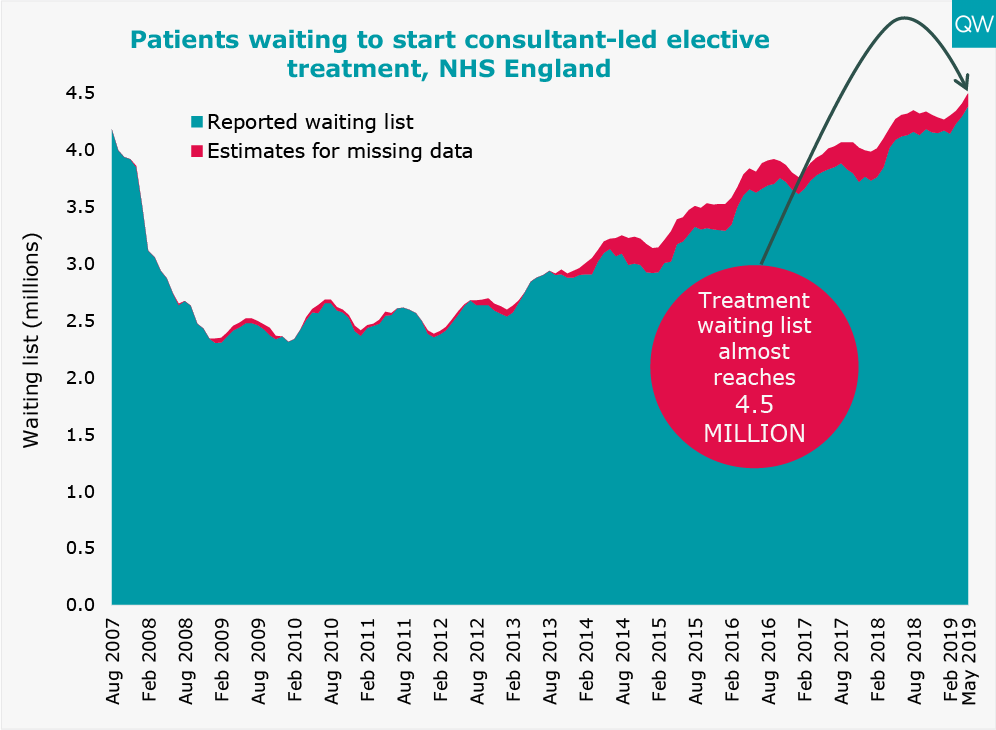
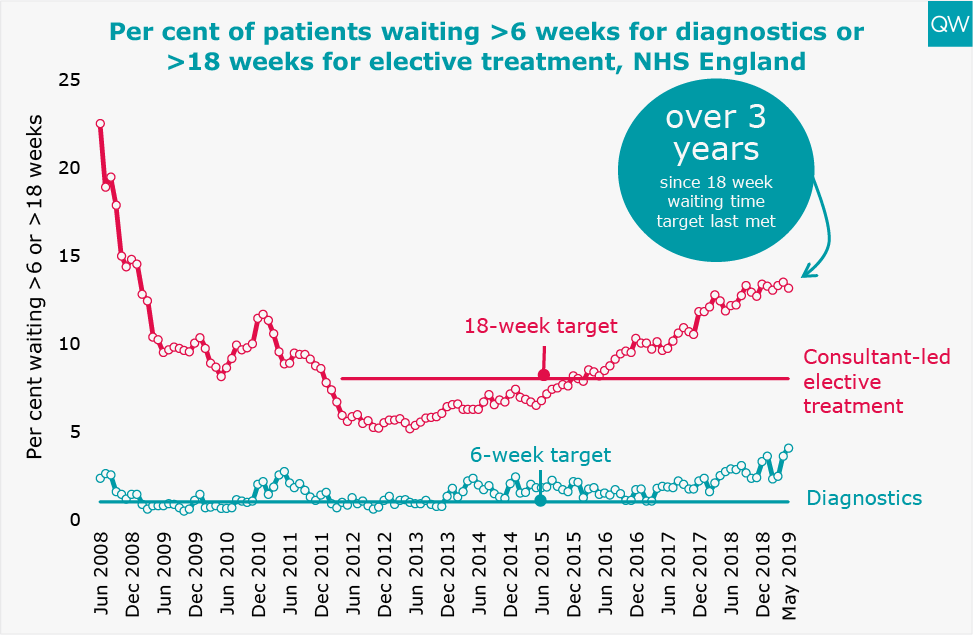
Delayed transfers of care
- The total number of delayed transfer of care days increased to 139,467 in May 2019, which is almost the same as it was in June 2015.
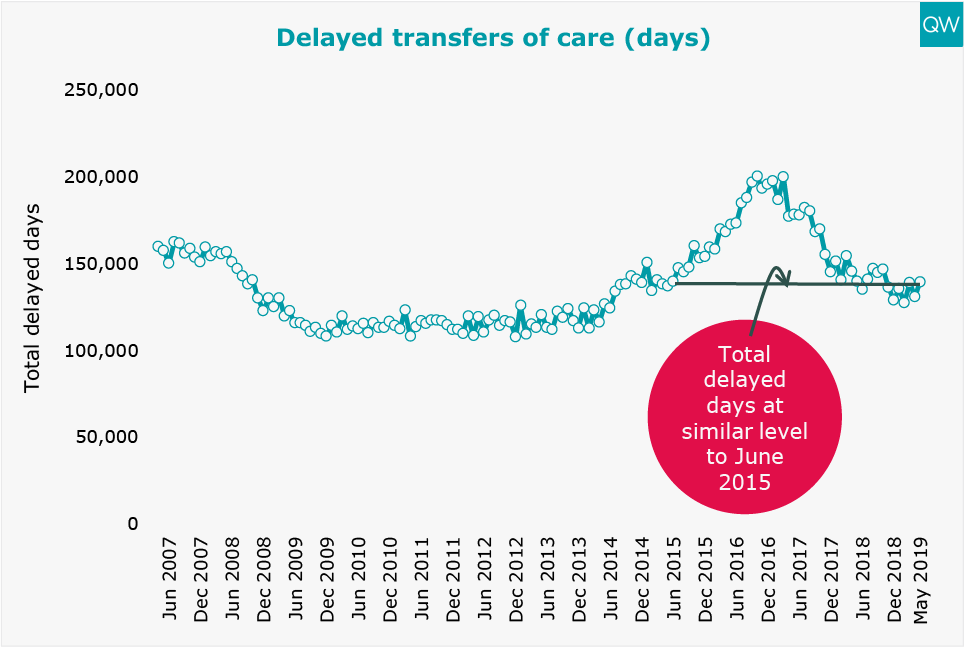
Cancer waiting times
- In May 2019, over one in five patients (22.5%) waited longer than two months to start their first treatment for cancer following an urgent GP referral. This is 1.9 percentage points higher than the previous month but 3.6 percentage points higher than in May 2018.
- The 62-day cancer target has not been met in nearly three and a half years.
